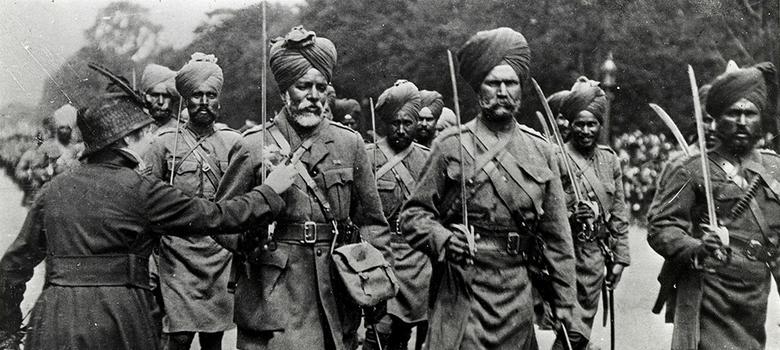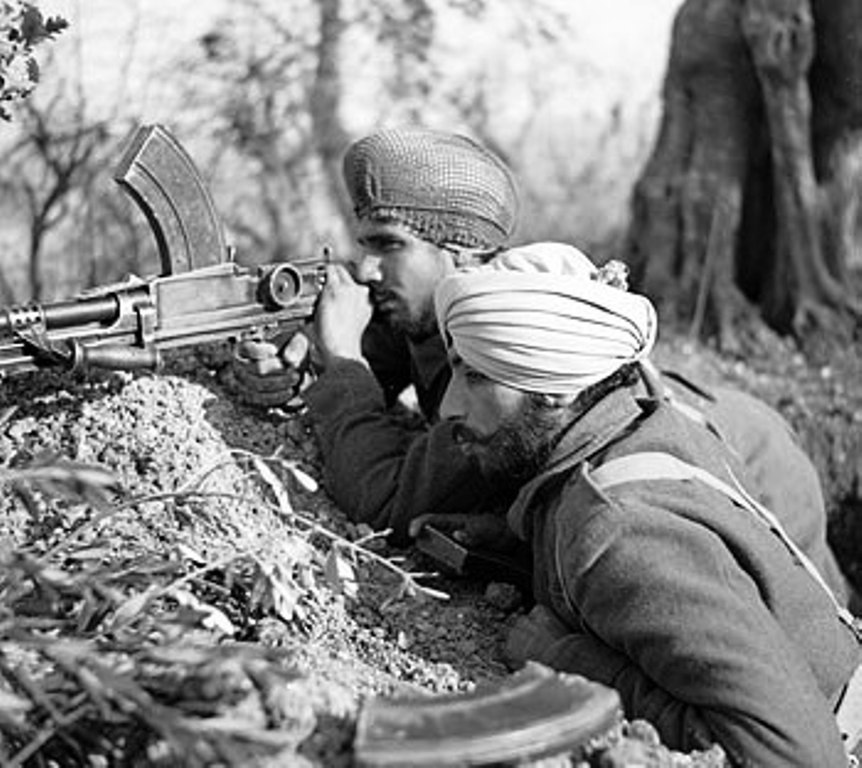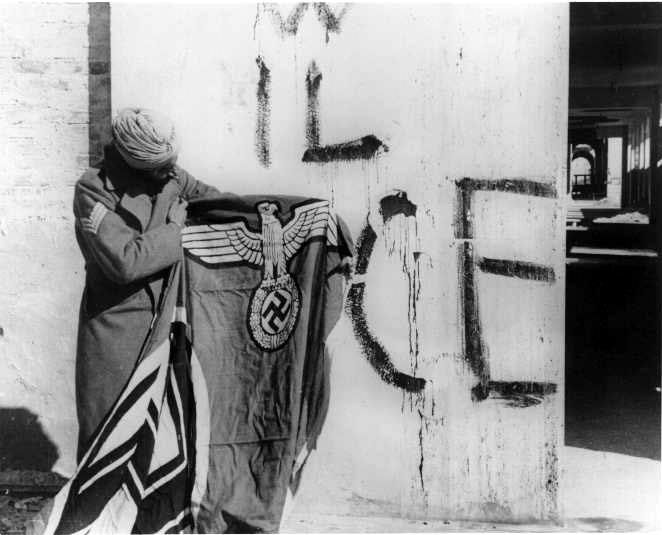
"Sikh soldiers marching in France at the conclusion of the First World War."
Sikhism is the world's fifth-largest religion and originated in northern India in the 16th century. Sikh men and women usually keep their hair uncut as staying true to the form God made them in.
Sikhs are only 2% of India's population, but at the time of India's independence from Britain, they made up 50% of Indian Army officers, 38% of the air force and 33% of combat soldiers of the British Indian army (numbers swelled due to the recent World War). The British recognized the Sikhs and Gorkhas as valiant fighters (The Battle of Saragarhi is one of the eight stories of collective bravery published by UNESCO and is rated as one of the most courageous actions in the annals of military history, where 21 Sikh soldiers led by Havildar Ishar Singh held onto the Saragarhi fort against 10,000 Afghan Tribesman on September 12, 1897, and fought to their death rather than abandoning the fort) and hence preferentially selected them for the Armed Forces.
Even 20 years after the British left India, Sikhs accounted for 20% of the commissioned officers, and 40% of India's Brigadiers and 45% of Majors-Generals
(Madra & Parmjit Singh 105, 166) (Aulakh, NYT Opinion).

"Sikh soldiers marching in France at the conclusion of the First World War."

"Two Indian soldiers using a Bren light machine gun in the Italian campaign near Villa Grande, 15 January 1944."

"A triumphant Sikh admires a prized captured Nazi flag that was flying when Indian troops entered the town of Benghazi, Libya in 1945."
(All three images from Warrior Saints).